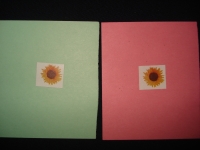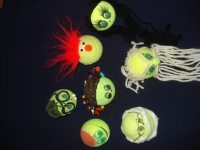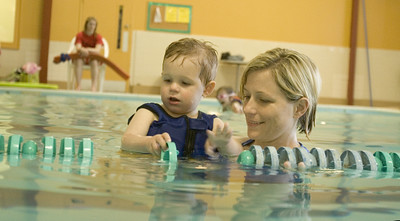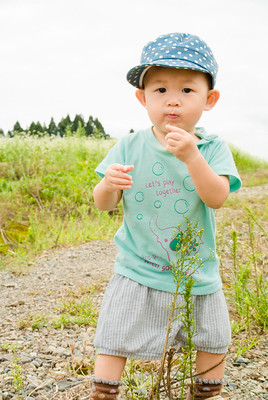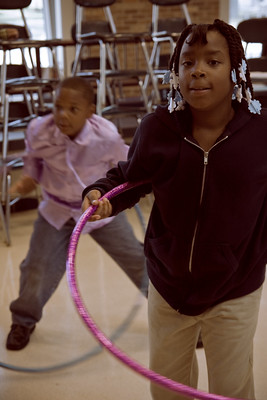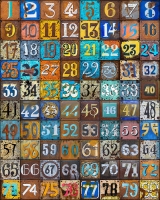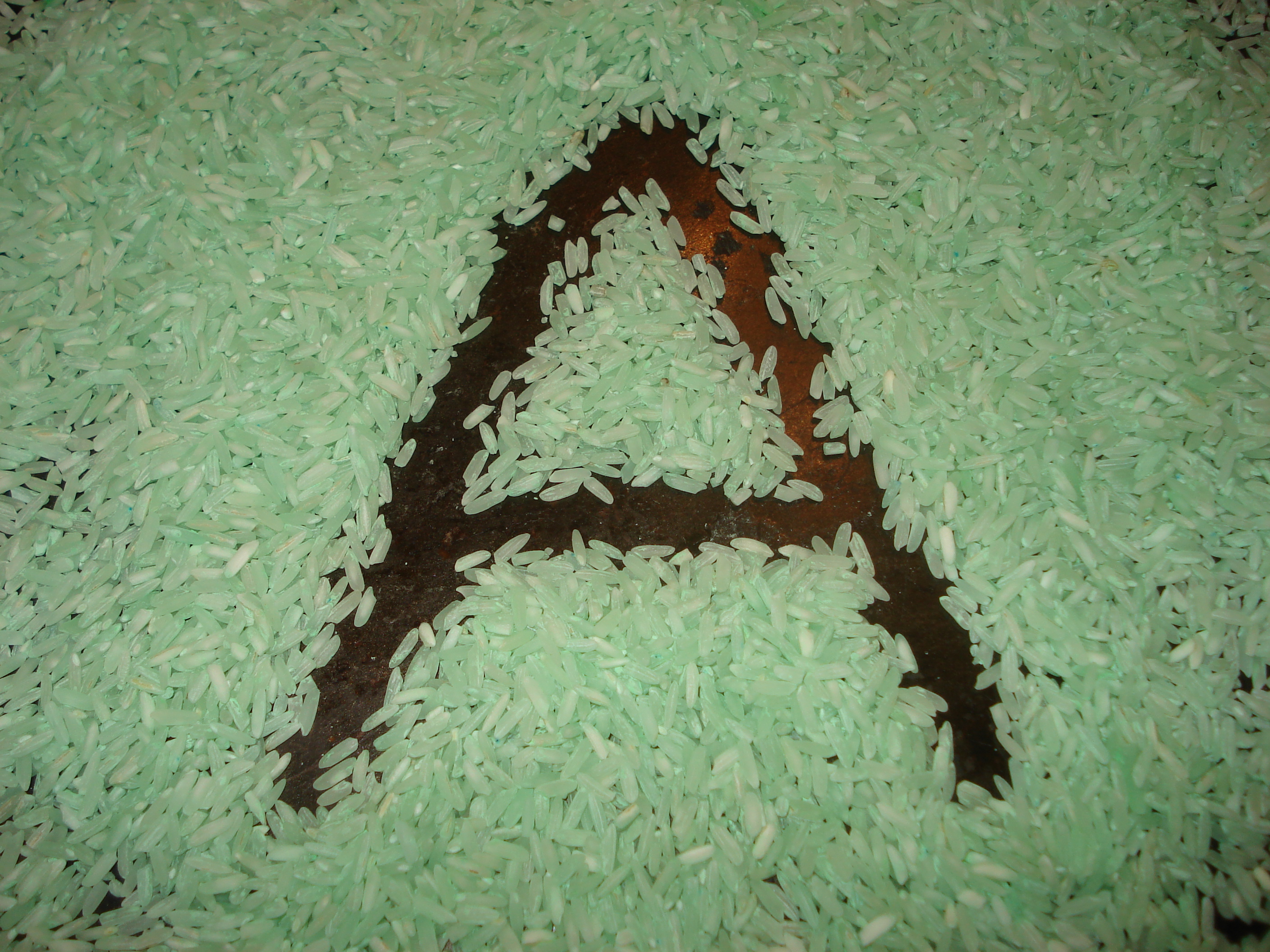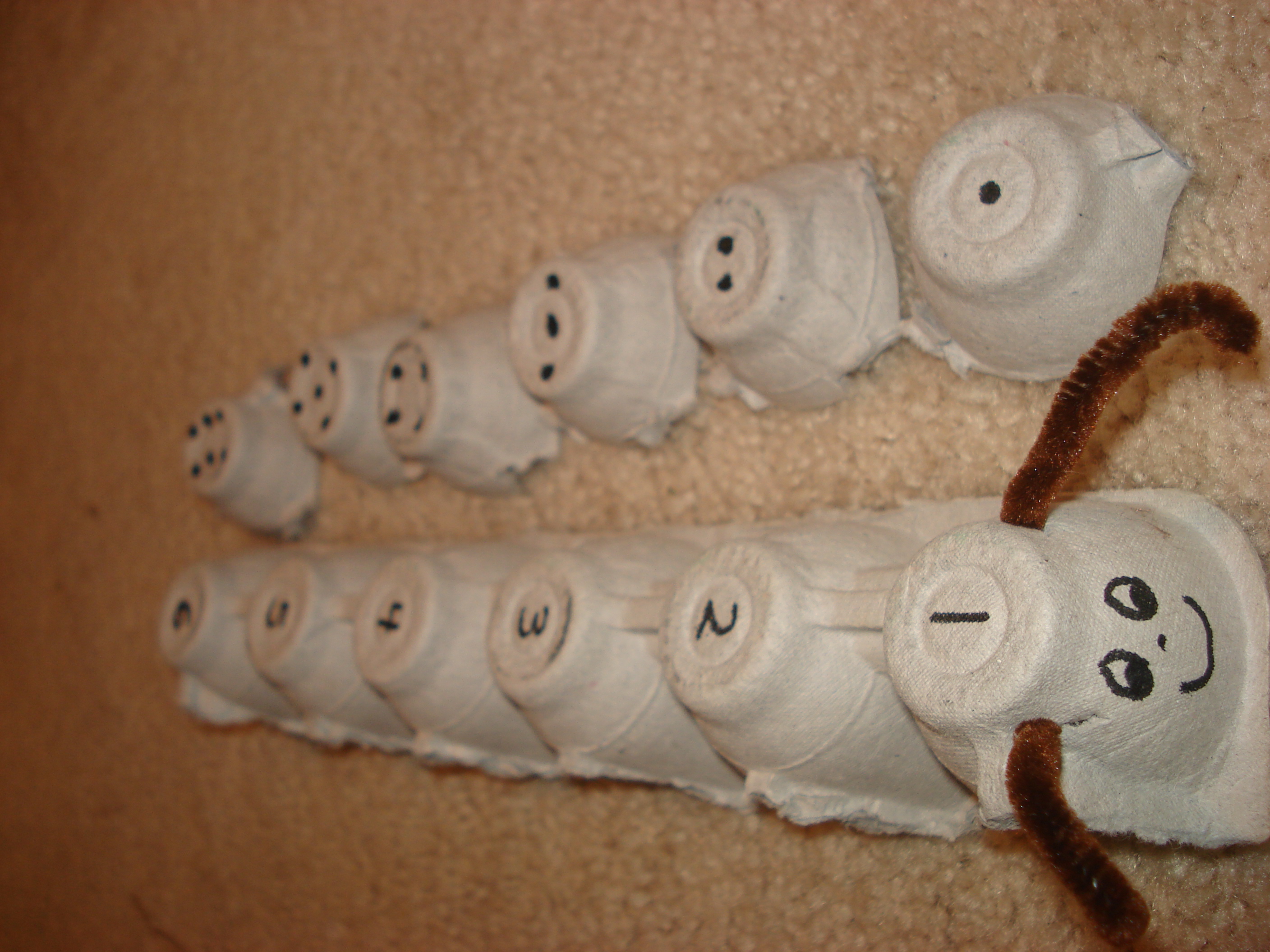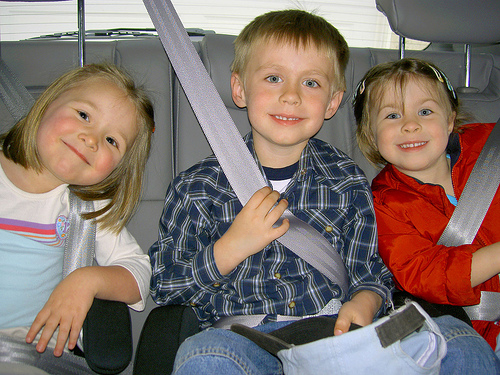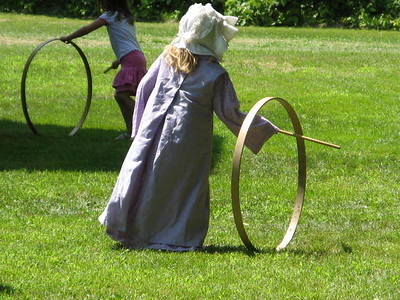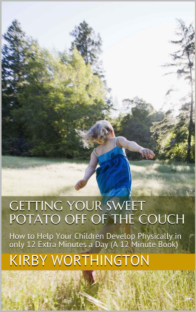Find many creative ideas to get children leaping ahead in their physical development, all while done with things found at home. This is the time to take a minute to watch these and strengthen your options while stuck at home. Enjoy!
Anything can be made into a matching game. Just look around your house. Do you have two forks? Two noodles? The point is, you don't have to go out and buy anything to make a matching game.
In matching, the brain is being wired in both pre-math and pre-reading ways to notice what's alike and what's different. For example, how does a child learn to differentiate between an "a" and a "d"? They need to see all the parts of something before they decide if they are the same or different.
So, starting when children are toddlers, begin to simply notice and name the difference in things. Big rock, small rock. Two different leaves. You can mention similarities as well. Then point out the differences. Two different balls. Mention size, color, etc. This is the first step. Just notice and point out things that are the same and different in everyday life.
Here are two learning games that can be done while going about normal everyday tasks that will involve children age two or older in growing developmentally all while getting things done!
ORDER GAME
Materials:
As mentioned previously, children today are learning to type but their hands aren't strong enough to write or do other tasks like being able to eat without spilling on themselves which is a skill that requires hand strength and coordination. People want and need to write legibly and quickly. Arts and crafts, the playing of musical instruments, cooking, measuring....all parts of life require finger strength.
Here is a list of some ways to build finger strength:
- climbing trees or jungle gyms
- folding clothes (make a matching game out of the socks)
- crawl through toy tunnels or cardboard box tunnels
- pretend to be animals and crawl around
- sweep with a child-size broom
- wash the car (or make a car wash tunnel with a garbage bag cut into strips - this can also be seaweed that they can crabwalk through on the ocean floor)
- cooking! stir, knead, cut, roll
- play with playdough or clay (which is even better for strengthening)
- give the baby doll a bath or handwash the doll clothes - wring them dry and hang them out on the line with clothespins
- sewing cards that progress to learning stitches, sewing on a button, and more
- ball puppets (see below)
How to make a ball puppet:
Does your gene pool have learning challenges in the mix: ADD/ADHD/autism/dyslexia? Studies of children diagnosed with autism show that early intervention has helped to the point that the autism was undetectable. There are also early intervention techniques for physical challenges. Almost any problem that presents itself in childhood can be helped if we work with the child in fun and helpful ways. Involving as many senses as possible in the learning process including physical activities is a key factor. If the body can move while learning, by the time a child is school-age the brain will have made all kinds of new connections.
Maria Montessori, the first female doctor in 19th century Italy, saw children labelled "mentally retarded" and believed they could learn. She broke everything down into small components and taught using the body through doing activities that laid the groundwork for math, language, and all other learning. After Montessori worked with them, the same children with these labels on their identity were then able to pass the exams taken by "normal" children.
Let's look at some ways to employ this technique to break math down into small parts. For a child to learn math it has to be pieced apart:
The development of the ability for delayed gratification can be done from an early age. Increasing one's attention span will eventually affect many aspects of life from saving money to controlling a temper or facing temptation to do the wrong thing. It is important to start at the beginning.
The fact is the younger the age, the shorter the attention span. Infants have needs that should be met immediately. They need to know that their needs will be taken care of and this is exactly where they should be at developmentally. Toddlers have enough ability to wait with distraction or accept help to accomplish the thing for which they're waiting. Preschoolers can be stretched to increase their ability to wait with some help.
If you're curious where your child's attention span is at, try this little test... Place a raisin or M&M under a cup making sure your child sees what you're doing. Then explain that they can pick up the cup and eat it AFTER you ring the bell. (You can do this with lunch food or anything you approve of but keep it small so they don't fill up too quickly.) For the first ringing of the bell, ring right away. On the second attempt, ring the bell after a few seconds' delay. With each subsequent ringing, lengthen the time by a little longer each turn to try to stretch them. Some children will be able to wait and some won't. If they cannot wait for the bell, still watch the clock and ring the bell anyway as they will have to wait for it on the next round. Don't get upset. This is just an area to work on. Sidenote: don't play this when they're really hungry but when they still want a little food, like at snack time.
Travelling with children can be a special time, even on a road trip! The kids have the potential to triple their vocabulary on a week-long car trip if that's what is chosen to work on. Relationships among family members can improve with interactive car games. Whether infant, toddler, or early elementary, littles can have fun and leap ahead in cognitive development and fine motor skills while en route to your holiday destination.
While technology is a very handy tool to have when travelling, make sure your children are not on their devices the whole travel time. Pack a backpack/travel bag per child that they may fill with their travel treasures. Elementary age children can usually make independent choices on what to leave and what is important to bring. This may include dolls (with add-ins of ribbons, pieces of fabric, etc.) that would be useful for making up stories so be sure to include several that can interact with each other. Comic books, graphic novels, magazines, coloring books, and educational workbooks are all lightweight for easier transportation. Crayons are recommended over markers for use in the car but be sure to keep them in a baggie in case there is weather hot enough to melt them.
A separate family trip bag can be filled with toys that are never seen except for on a trip. These toys might be:
In our final hoop installment, we'll look at how to use hoops to teach more complex ideas while keeping it user-friendly for children. Preschoolers cannot think with adult logic but they can grasp more intellectually by using tangible objects, for example using hoops to learn sorting.
When using hoops to teach sorting make sure only two varieties (colors/shapes) are being used. For a 2 year old, place the hoops on the ground next to each other and present a group of circles and squares that can be sorted into the hoop for circles and the hoop for squares. The same could be done with two colors. In general, most two year olds can grasp this concept. For three year olds, it is always best to start with two varieties. If this is easy, move to three options to sort and so on with four varieties of color/shape, etc.
When the child is using their body to sort by placing/throwing the object into the hoop for that specific category, this helps them learn faster and better. It also helps with physical development. Keep this activity simple for the first four and a half years of life. The approach should be to try a game and if it doesn't work try again in a couple of months. Try to find a way to involve the child's body. Some children need to feel to learn (just as we do when making letters out of sandpaper for them to trace with their fingers).
 How to Use a Hoop:
How to Use a Hoop:
- Place the hoop on the floor, one for each person (including parents), and take turns telling each other how many body parts to put into your hoop. Be creative: elbow and knee, bottom and two hands, etc….any two body parts. This aids in learning inside/outside and number of parts. (Parents/grandparents: only do what you can safely do. If you have any concerns, check with your doctor.)
- Kukla is a Turkish game most commonly played by making an O in the dirt and piling up rocks in the center. This can also be played indoors with a hoop and homemade bowling pins or a pile of blocks inside the hoop. Once the pile is set, use bean bags or rolled up socks (socks are one of the safest indoor balls) to throw and knock it down. If anything is knocked down, everyone yells in unison “Kukla!” We celebrate any success, even a slight movement: “Look it moved. You almost got it! Let’s see if you can knock one down this time.”
Today’s activities will be toward benefiting pre-reading and pre-math skills. We will get the body and senses involved.
It is important to remember to set up everything so there will be minimal clean-up afterwards. (For instance, on top of an old shower curtain or sheet.)
Finger Painting with Shaving Cream
When my oldest daughter was 15 months old, her dad built a sandbox. I (Kirby) knew it was going to be perfect! I could hang clothes out to dry while my toddler blissfully discovered pouring and measuring and building and dumping. Montessori had come to my house!
I gathered up my basket of wet clothes, led my little girl over to the new sandbox, and headed for the clothesline. But she just stood there, staring at the sand and looking puzzled. Then it hit me—she didn't know how to play with sand. So I abandoned my laundry and we spent time making mountains together and filling up her dump truck, pouring water onto the sand, and digging holes. After that, she knew what to do, and she knew how much fun it could be.
It's not just kids who haven't learned how to play with sand. Lots of parents don't know what to do with a sandbox either. So here's a list of activities you can do with your pre-schooler in the sand. All of these games build cognitive and physical skills too.
"One of the best predictors of whether a child will function competently in school and go on to contribute actively in our increasingly literate society is the level to which the child progresses in reading and writing. Although reading and writing abilities continue to develop throughout the lifespan, the early childhood years—from birth through age eight—are the most important period for literacy development." -- The International Reading Association
As you can see from the above quote, writing skills are crucial for ensuring success in school and life. The good news is that activities that teach writing are things that kids love to do!
The first step to learning to write is strengthening finger and hand muscles. For ideas on how to do this, see this post.
Grocery shopping with preschoolers isn't easy. We get goal-oriented about shopping and feel frustrated that our kids are slowing us down. But grocery stores offer a wealth of stimuli for a child's brain, and shopping is a great opportunity to help your little one learn and grow. Below are some ways you can engage your child while getting your shopping done.
Name everything. Everything you buy, hold it up and name it. Let your child hold, feel, and smell items. This will help your child's vocabulary explode.
Work on colors. Once your child knows lots of nouns, you can begin to work on colors. Hold up a banana and say, "Yellow. Yellow banana." Do this with anything that has a clear color. Show your child something red, and then say, "Can you find anything red?" Let them name everything they can find that's red. Play "I Spy." Keep in mind that kids under 3 probably won't remember what they picked, so they may say no to everything you guess!
Bubbles in a cup is a great summer activity for outside. It teaches concentration and attention span, strengthens the muscles of the mouth, provides a science lesson, teaches following directions, and is lots of fun!
Materials:
- Towel to soak up spills if inside
- Tray under the cup or bowl
- Flat-bottomed bowl or cup – one per child
- A little Liquid detergent for dishes in water
- Straw – one per child
- (for bubbles that float, add a little cooking oil)
Procedure:
A travel activity book is a spiral notebook filled with learning games and fun activities for times your child needs to do something quiet, like in the doctor's office, waiting rooms, or during car trips. It's a combination of activities drawn onto pages, games held in envelopes stapled into the notebook, and blank pages for creative fun. Grab a notebook and let's get started!
Envelope games
Pipe-cleaner people. In one envelope put in pre-made pipe-cleaner people, bits of cloth for clothes, and plain pipe cleaners for making props. Playing with posable pipe-cleaner people is great for your child's finger muscles and fine motor skills, and it makes for fun pretend play. You can tie pipe cleaner people onto a car seat for a preschooler so if your child drops them, he can pull them back up again.
Does the idea of a car trip with small children fill you with dread? Road trips don't have to be torture. In fact, they can be an immersion learning opportunity for your kids. If you fill your time in the car with fun games and activities, you can expect your children's vocabulary and knowledge to grow exponentially in a short time while you cultivate fun memories and a strong relationship.
The real challenge of road trips is keeping kids entertained. Here are some ideas that will engage your kids and help them learn and grow at the same time.
Play rhyming games. Let the youngest child say a word and have everyone else say a word that rhymes. Try to come up with as many rhymes as possible. Read Piggle by Crosby Bonsall, and play "Piggle" by saying four words that rhyme, mixing up real words and nonsense words.
Bean bags are fun learning materials for babies, preschoolers, and even older children. The easiest bean bag to make is to fill a child's sock with popcorn, beans, or rice, and then tie a knot in the end of the sock.
For babies, give them a bowl full of bean bags and let them pull them out and put them in. Say "out" and "in" as they move the bags. This is good for eye-hand coordination, hand strength, and learning the concepts of out and in.
As children become able to stand, bean bags work great for throwing games. For ways to teach throwing skills, see this post. A first step is just to have your toddler stand over a bowl and drop the bean bag in. Next, you can teach the throwing motion. Have your toddler or preschooler hold the bean bag and swing their arm back and forth. Tell them to let go when their hand comes forward. You can have them experiment with letting go at different points so that they can see what happens. It takes some time to get the hang of letting go when you swing your hand forward.
Hula hoops are great tools for developing physical skills, and they are lots of fun too! A preschooler probably won't be able to use a hula hoop for its intended use yet, but there is still a lot they can do with one. Here is a list of games and learning activities for hula hoop time.
Lay the hoop on the ground and use it as a target for a bean bag toss.
Put a series of hoops on the floor, and have your child follow directions to hop from hoop to hoop. They can jump with both feet, step, hop on one foot, etc.
Learning games are a great way to teach your child a well-rounded set of skills and to lay a foundation for all the learning she will do in life. You'll find lots of examples and activities on our blog and website. Here we've collected some principles that will help your experience of playing learning games go smoothly.
Keep it fun and lighthearted. As soon as learning feels like work instead of play, your kids will resist.
Don't force anything. Invite, make it appealing, demonstrate how much fun the activity is, but don't make your child do something he isn't interested in. He may not be developmentally ready, or his development may be centered around a different skill this week. Appeal to his interests rather than what you think he ought to be doing.

